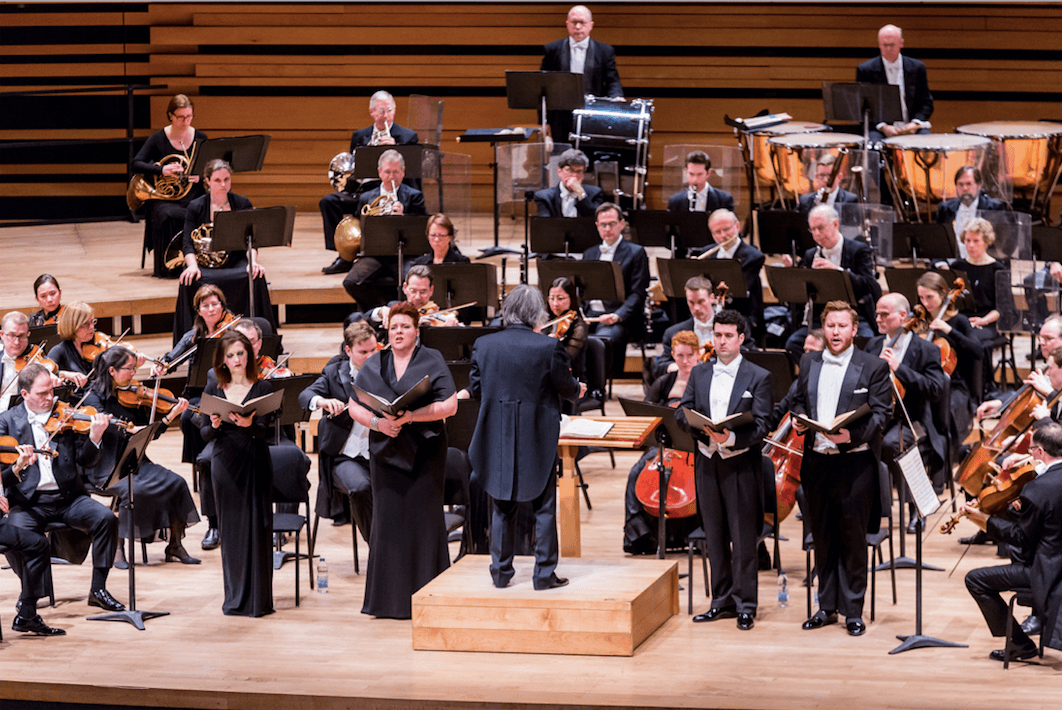Verdi’s Requiem at OSM

Performed by world-class voices under the direction of Kent Nagano, Verdi’s Requiem will stir you to your core. During this concert presented without intermission, the agility of soprano Patrizia Ciofi voice and the magnitude of mezzo-soprano Marie-Nicole Lemieux voice will not remain you indifferent. Their international career have led them to the most renowned venues throughout the world.
To express their gratitude, Music Director Kent Nagano and the OSM have dedicated the concert of March 21 to the memory of Jacqueline Desmarais who recently passed away. Madame Desmarais was a great benefactor and a true lover of opera and classical music, whose grandiose contribution to the OSM and the music world in Canada and internationally will be remembered for many years to come.

Verdi’s requiem stands at the pinnacle of the sacred choral repertory for its passionate sincerity, expressive intensity and dramatic power. It encompasses moments ranging from hushed whispers to thunderous walls of sound, from the quiet intimacy of the soul to the terrors of Judgment Day, from stark simplicity, such as the shimmering background of strings in the Lux aeterna, to awesome contrapuntal complexities, as found in the Sanctus.
The Requiem opens in a mood of hushed mystery. A normal Mass would begin with the Kyrie, but this being a Requiem Mass, it is introduced by the Introit consisting of the antiphon “Requiem aeternam dona eis” and the psalm “Te decet hymnus” sung a cappella. The solo voices make their successive entries in the Kyrie, where the tempo quickens and the mood brightens for the prayer for mercy.

The Dies irae is by far the longest section of the Requiem. In its opening pages Verdi pulls out all the stops, unleashing the full power of his large orchestra and chorus in its portrayal of the terrors of Judgment Day. In eight further sub-sections, the peoples’ hopes, fears, and pleas for salvation are portrayed by the various soloists in moods ranging from hushed awe to terrified outbursts. Twice more the electrifying opening verse returns. The frightening power and visceral impact of this music caused some of the Requiem’s early critics to complain that it was too operatic, too theatrical, not dignified or ecclesiastical enough.
The Offertorio is more intimate in character, at times taking on a chamber music quality. It omits the chorus but spotlights all four soloists, both individually and as an ensemble. The outer sections are set to a gently rocking rhythm that develops from the opening solo cello lines. Verdi withholds the timbre of the bright soprano voice until the appropriate pictorial moment: at the words “sed signifer sanctus Michael …,” where St. Michael will bring the souls of the faithful from the maws of hell to the holy light that God promised to Abraham and his seed. The central “Hostias” is music of quiet radiance and inner peace, introduced by the tenor dolcissimo (very sweetly).

The Sanctus is short but spirited, and contains the only truly joyous music in the Requiem, a fugue sung by double chorus (in eight parts). Near the end of this contrapuntal tour de force Verdi adds a spine-tingling effect in the form of a run up and down the chromatic scale, played fortissimo by every single instrument from tuba to piccolo.
The Agnus Dei is, by contrast, the essence of simplicity. The opening for solo soprano and mezzo singing quietly and dolcissimo in octaves is as memorable in its own way as was the terrifying outburst that opened the Dies irae. This thirteen-bar duet is then repeated in five different ways, each time to different scoring.
The Lux aeterna opens with a shimmering background of violins divided into six parts, against which the mezzo-soprano quietly intones the prayer for perpetual light. The bass makes the same plea, but in solemn tones to the tread of a funeral march.

The solo soprano, silent throughout the Lux aeterna, suddenly springs to the fore at the beginning of the Libera me. In terrified tones that might well have come from an operatic recitative, she implores the Deity for salvation from the agonies of hell. From this point on, the movement serves as a summary of the entire Requiem, revisiting or recalling various parts of the enormous edifice: a literal reprise of the opening of the Dies irae, a return to the music of solemn mystery that opened the entire Requiem, now scored for solo soprano and a cappella choir; a fugue set to the rhythm and to a melodic inversion of the Sanctus; and other references to the past.
The Requiem closes with the chorus intoning a final supplication for deliverance, now in an almost inaudible whisper that seems to disappear into the farthest reaches of the cosmos. We encourage you to attend this concert, the next ones are scheduled on March 24 and 25.
Source: OSM

